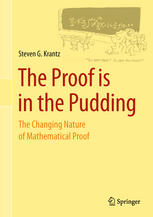

Most ebook files are in PDF format, so you can easily read them using various software such as Foxit Reader or directly on the Google Chrome browser.
Some ebook files are released by publishers in other formats such as .awz, .mobi, .epub, .fb2, etc. You may need to install specific software to read these formats on mobile/PC, such as Calibre.
Please read the tutorial at this link: https://ebookbell.com/faq
We offer FREE conversion to the popular formats you request; however, this may take some time. Therefore, right after payment, please email us, and we will try to provide the service as quickly as possible.
For some exceptional file formats or broken links (if any), please refrain from opening any disputes. Instead, email us first, and we will try to assist within a maximum of 6 hours.
EbookBell Team

4.0
46 reviewsKrantz’s book covers the full history and evolution of the proof concept. The notion of rigorous thinking has evolved over time, and this book documents that development. It gives examples both of decisive developments in the technique of proof and also of magnificent blunders that taught us about how to think rigorously. Many historical vignettes illustrate the concepts and acquaint the reader with how mathematicians think and what they care about.
In modern times, strict rules for generating and recording proof have been established. At the same time, many new vectors and forces have had an influence over the way mathematics is practiced. Certainly the computer plays a fundamental role in many mathematical investigations.
But there are also fascinating social forces that have affected the way that we now conceive of proof. Daniel Gorenstein’s program to classify the finite simple groups, Thomas Hales’s resolution of the Kepler sphere-packing problem, Louis de Branges’s proof of the Bieberbach conjecture, and Thurston’s treatment of the geometrization program are but some examples of mathematical proofs that were generated in ways inconceivable 100 years ago. Krantz treats all of them---and more---in some detail; he names the players and tells all the secrets.
Many of the proofs treated in this book are described in some detail, with figures and explanatory equations. The reader is given a dose of modern mathematics, and how mathematicians think. Both the joy and the sorrow of mathematical exploration are communicated dynamically and energetically in this exciting new book.